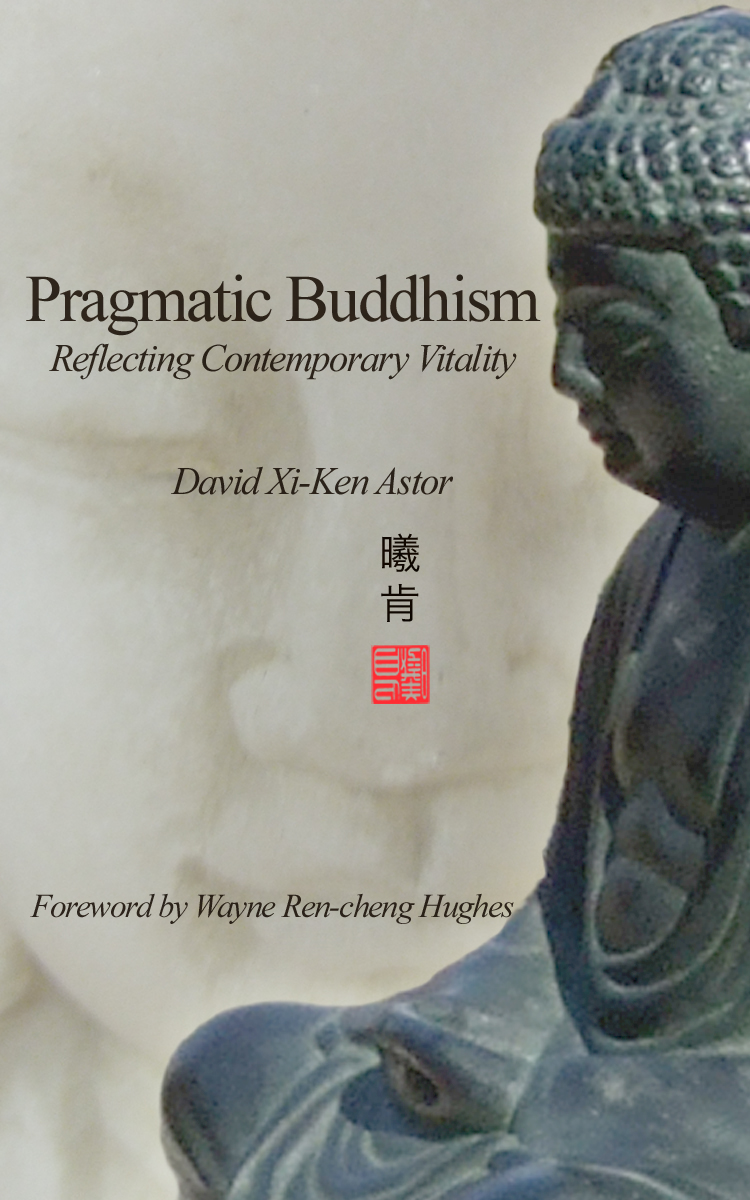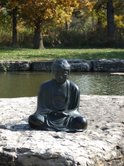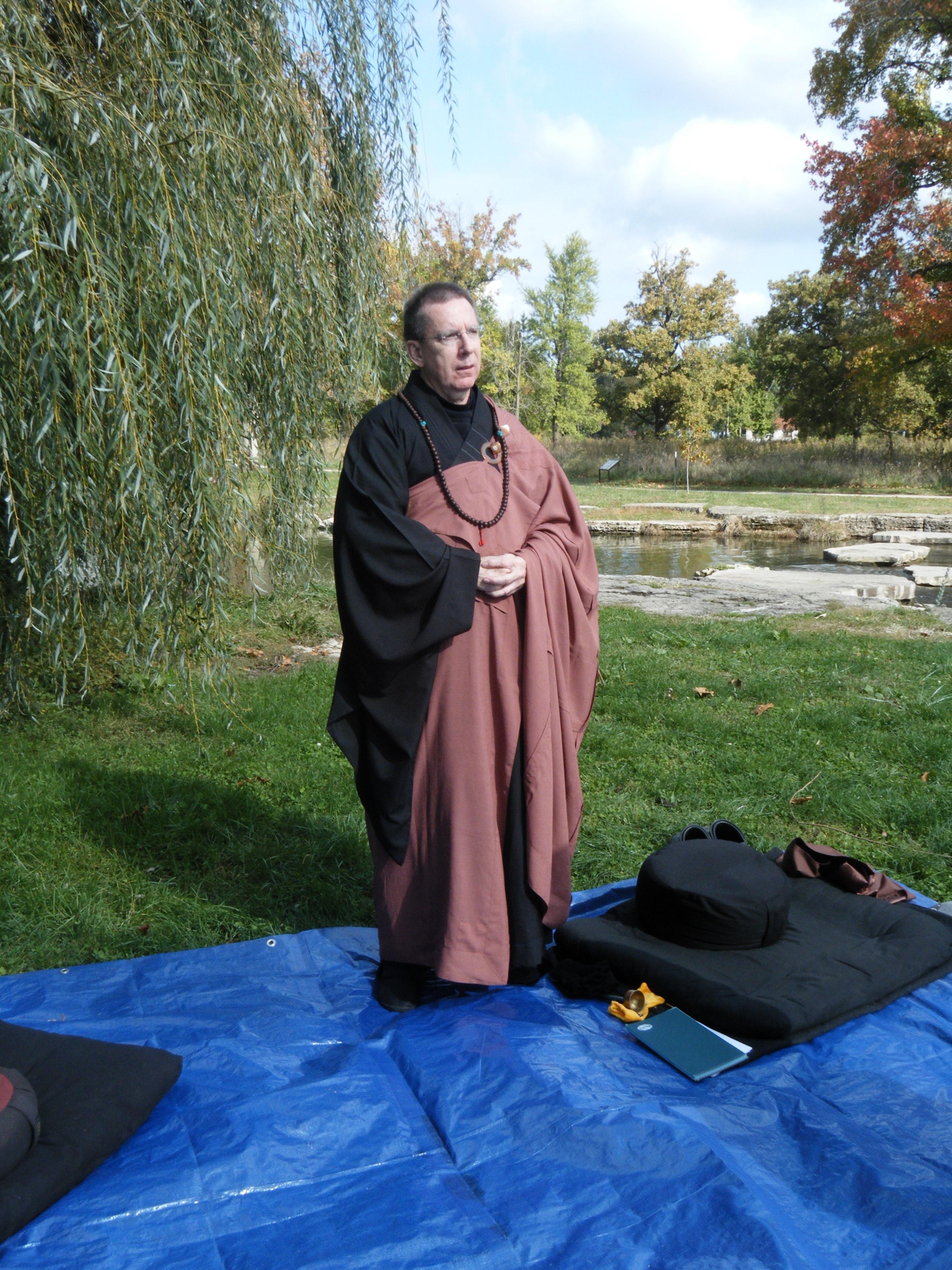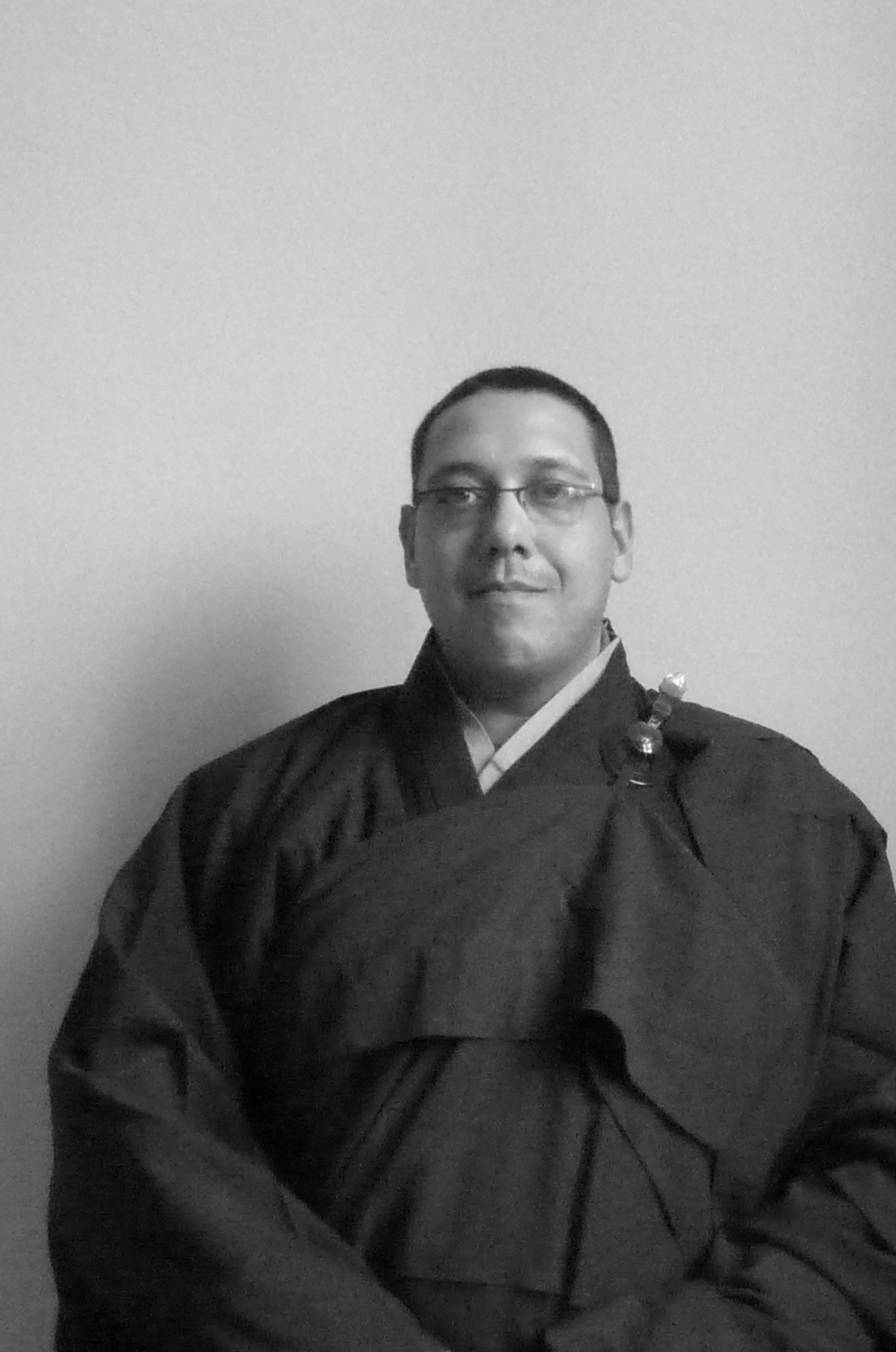By: David Xi-Ken Astor, Sensei
The nature of dana, generosity or giving, relates directly to hearing and responding to one’s spiritual calling. In Master Dogen’s ‘Shobogenzo’, two chapters address dana in different ways. The first talk is entitled “Establishment of the Bodhi Mind” and was directed to the laity, and the second is called “Establishment of the Will to the Supreme” which Dogen addressed to the temple monks. These talks were given on the same day about six hours apart we are told, just after Dogen entered his new monastic home in the mountains.
The first instruction was given to the laity as a lesson on generosity of life as it is. He was imploring those who were donating money or labor to the temple, to continue to do so. An age old challenge that continues to haunt Buddhist teachers even today. A little time later, he offered a talk to the monastics in his newly established monastery, but this time focusing on impermanence, the absolutely fleeting nature of life. He beseeched the monastics to give their life away to others, to not get lost in zazen and the solitary practice of realizing themselves before taking care of all beings, including those he had addressed six hours earlier. These two teachings, different in perspective but focused on the same subject, takes dana as the act of contributing to the Sangha’s upkeep and highlights its place in a compassionate practice. The human emotion of compassion is developed when you give selflessly. Likewise, when one receives they are given an opportunity for experiencing feelings of compassion.
Dogen was a master strategist as well as a brilliant dharma teacher as his written works in our possession today reflects. His wonderful teaching reveals dana within a beautiful, circular path, flowing in both directions among the laity and the monastics. Utterly and forever different, each giving to the other. The recognition of the inter-being of self and other. The social-self in action. Through these two we create a wonderful interplay of dana, of exchange, of one hand supporting the other and the other supporting the first to the point that it is not clear which is giving and which is receiving. That is when we enter into the heart of ‘dana paramita,’ the perfection of selfless giving. The term ‘dana’ when used alone is referencing our actions toward upkeep of something we highly value. The term ‘dana paramita’ encompasses all acts of generosity, including those of supporting directly the transmission of the dharma.
Dogen’s understanding of the nature of dana that is reflected in this teaching, rests on the need for a teacher to present the right dharma, so we do not drift away. The burden is on the Buddhist teacher to know what the Sangha needs to hear in order to advance to awakening to Universal reality. I take the time each week to develop lessons for my students that I hope are relevant and useful in their personal lives. This reflects a way to view generosity and how to consider the nature of the Sangha as a social body united, not divided. For dana to generate it’s full karmic potential it requires giving and receiving by both elements of a mature Sangha. Dogen is saying don’t negate cause and effect. The energy that is put into teaching and transmitting the dharma is combined with the energy of supporting the effort, so the dharma can be both transmitted and received for the good of all beings.
It is worth questioning what it is precisely that teachers do. What is really going on within the teacher/student relationship? What does the teacher offer that is at the center of our relationship? I find that a good teacher makes us extend ourselves in our fullest capacity to contribute. A good teacher asks us to extend ourselves beyond what we consider tolerable. They encourage us to keep asking, how can I give? How can I serve? How can I dissolve utterly into this activity we call practice? We are challenged to look deeply into how we are living our lives, and to understand both the spirit of dana and to expand our capacity and skillfulness in giving. This is another pillar supporting the platform upon which an engaged Buddhist practice stands. No matter if it is a monastic or lay practice.
What is the appropriate expression of giving from person to person, moment to moment, day to day? What do we need to do in giving? Simultaneous giving is the recognition of how much I am receiving. How infinitely inexhaustible is that nourishment, the infinite bounty we discover in this our life giving practice, the potential for acts of generosity in any situation, in each person we encounter, in the value we place in our teachers. The whole universe is coming to us in every one of those moments. We so easily forget this, just how rich, how infinitely generous each situation is, how each of us is giving completely at this very moment, even in this virtual world we now sit in that is only real if we awaken to what is beyond the visual. We may take issue with how different our life is away from Second Life, except for one small detail — this process of training, as it is, is sufficient in and of itself. There is nothing else needed. If we can truly perfect the virtue of generosity for the sake of valuing the potential for real social connection to those behind the avatar, everything will be OK. It only takes the time to reach out to others. To connect and seek common ground.
Dogen’s teachings point to the importance of shifting from self-orientation to other-orientation in the practice of dana. The warning is very clear, do not place yourself ahead of others. That is what the ego-mind whispers in some of our ears. When are you ready to turn to others here in your Sangha? Ultimately, realizing yourself and taking care of all beings is one and the same reality. Wisdom and compassion are precisely the same thing, but that is not where we start in practice.
The encompassing and corrective measure is always to let go of yourself, forget yourself. Ultimately, wisdom is compassion, but what keeps us from realizing true wisdom is putting ourselves before others. Giving is an expression that heals this tendency and is the very manifestation of the identity of self and other, of wisdom and compassion. Buddha’s accomplishment as a teacher, as a spiritual being, is not measured by his solitary sitting. If that is all he did, we would not be here. His accomplishment is manifested in his dana, in his giving, his teaching. It is alive in his sharing of his body-mind, in the soles of his feet as he walked to all corners of his realm sharing the dharma. All those who heard his teachings, and those of us that came later, are included within the Buddha’s karmic generosity of dana.
It works the same way for you when you question what brought you to this path. Is it satisfying to reflect on how deeply you have sat in meditation, or attended one of my Dharma talks in person or read them online? Or is the important question how deeply you have internalized the lessons and found ways to integrate them into your worldview? When this happens we become less possessive, more generous and willing to extend ourselves. We become less likely to feel that we are being put upon and more likely to let the reality of the practice of dana meet us squarely where we are. Simultaneously, we liberate the self and other. We discover the lesson of living an altruistic life with purpose.
That is the ultimate nature of dana paramita, the complete relinquishment of the self. It is opening yourself completely to others. Your life becomes transparent. The two key components of what is absolutely necessary for us to take refuge in each other are the capacity to let go and the capacity to remain open. This is none other than the dismantling of the self-other paradigm. It is the same as dropping away of body-mind, the complete relinquishment of duality. What becomes apparent is the profound interconnection of giving, where all things in this very universe rest in the reality of giving, and the self is nothing other than the infinite network of dana.
The principle of dana is the core expression of engaging the dharma in an active practice. It is a spiritual reflection of a deeper understanding of intentional acts of charity. This clarity of thought immediately turns into action and offers somebody a helping hand. It becomes so natural that at a certain point one cannot even recognize what is going on. It is so plain, it is so basic, that a particular action at precisely the right time brings the potential for human flourishing into reality. A good example of a basic situation is that of taking our meal. What does it mean to receive food? What is being asked of us? What is being given to us in the midst of simply receiving some rice, some beans, some salad? Listen to the beginning words of a gatha chanted before a formal meal, “First, seventy-two labors brought us this food.” You see, it arrives to our table through labor, through work, through an infinity of conditions. It is the universe itself packaged in it’s various ways of expressing itself. Where are we in this? Do we deserve it with respect to our practice, with respect to the virtue of giving? Where is non-greed? Where does our desire reside at this particular moment as we begin to eat? It is necessary to study the self in the middle of that meal. The gatha goes on to give other reasons what the meal is really about. In a deeper since it is about our life, about our teachers, about the Three Treasures, it is about the precepts. It is about everybody else we share our life with. Suddenly there is simply giving and receiving. Dana is about making that connection; about completing the circle. As expressions of the universe, all of us are the link.
What is our practice when non-duality is not yet realized? When we have not shed all those layers of attachments and negative dispositions. We are called to practice dana as if it were perfected, so we can keep its lessons close in order to be ready to awaken to it’s reality when our practice has let go of its training wheels. It is precisely the way we practice zazen. Not as a means towards something but as the very reality that we are seeking. A reminder why we use the word “practice” on this path of ours.
It is important to see dana as protection. We give no fear. We do not make anyone afraid. In fear, everything is lost. The Three Pure Precepts comes to mind here: Do no harm, Do only good, Do good for others. So offer protection in any way needed. Protection from hunger for example, or protection against loss of the nurturing rewards associated with our Buddhist training. Our training, my presence as a teacher, this very virtual building we are now sitting in is subject to change and there are no guarantees that it will be here tomorrow. Protection from the terror of a fear-inducing culture. Create a space for somebody to walk in and not be afraid, not be afraid of greed, not be afraid of anger, or injustice. And in this day and age, opportunity is a “target rich environment”.
Another dimension of ‘dana paramita’ is in the giving of love. When we express the emotion of love we allow our love interest to have unrestricted access to our intimate being. This is why the practice of zazen can be quite unhinging. Early on we can see how accepting we can be with others, how there truly is room for all of me to be there. When we love someone we open up to them in ways that is unique to our human condition. In being that spacious, there is room for the whole universe to come to rest, maybe for the first time. That is why experiencing true love for the first time can be so overwhelming. As expressions of the universe, in giving unconditionally of ourselves to others, we offer the universe to itself.
Finally, there is the gift of the dharma, the gift of what is real, not necessarily of the teachings, although that may come along the way. It is much more basic than that. It is truly offering reality to each other. That is what the gift of the dharma is. That ultimately is what we are giving each other when we engage this practice, when we engage ourselves. The effects of that way of giving are endless. They multiply. In living truthfully and offering ourselves, no matter what it is that is being given. It changes the world. It changes another’s mind.
Dogen says:
“Giving is to transform the mind of living beings. One should not calculate the greatness or smallness of the mind, nor the greatness or smallness of the thing given. Nevertheless, there is a time when the mind transforms the thing. And there is giving in which things transform the mind.”
This is as basic as life itself. The whole universe is offered to us. Having this moment in time as a sentient being is a great gift of nature. We are given the chance of offering ourselves to the whole universe. In a sense, we have been deceived by the teachers and by the teachings. But we have been deceived because we wanted to be. We came here perhaps expecting to realize ourselves, expecting to gain some ultimate wisdom. To be enlightened. But in the end, we find ourselves in the midst of a huge circle where we are awakened to the reality that ultimate wisdom is that there is no distinction between us and the universe, except for our form. So why is it so hard to become aware that real progress in practice only comes from understanding the karmic nature of dana? Because we remain stuck and forgetful in who we brought to the dance. My first teacher would say, “But in the end, we find ourselves in the midst of a huge circle of fools, passing fallen leaves to each other.” And I would add, “expecting them to be fallen treasure of immense worth”. In a way they are, to the awakened empty mind – to the beginners mind.



















































































Great site! Thankyou, dude!
Thank you for this article. Can you please give me the sources of Dogen’s writings both for the laity and the monks? I can find them more easily using the Japanese names. Gassho. Teijo Munnich, Great Tree Zen Women’s Temple.
Okay, I found the references. For others who may have this question, the two references are: Hotsu-Mujoshin and Hotsu-Bodaishin. Again, thank to Astor Sensei for this article.